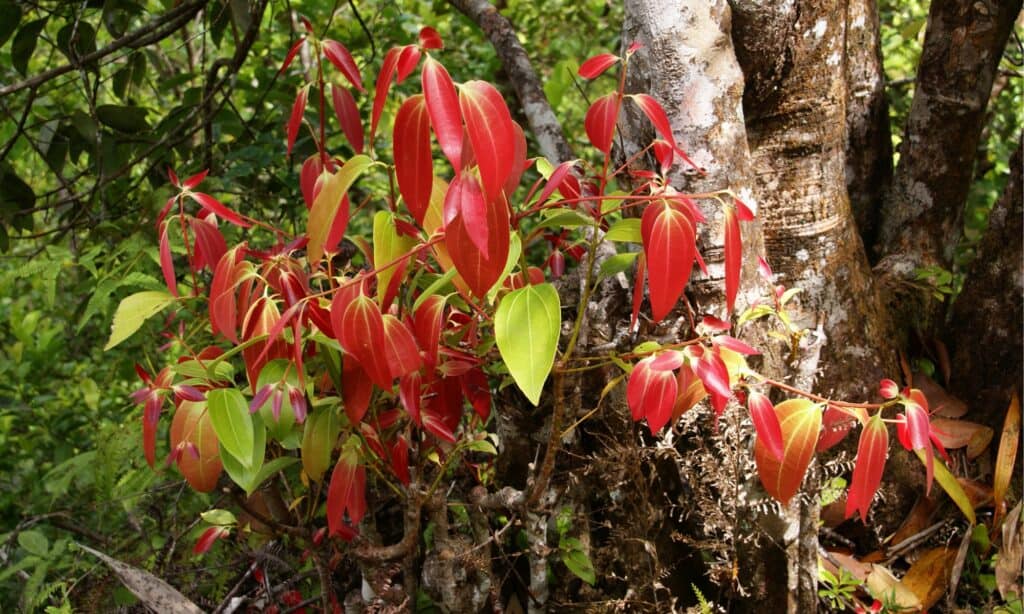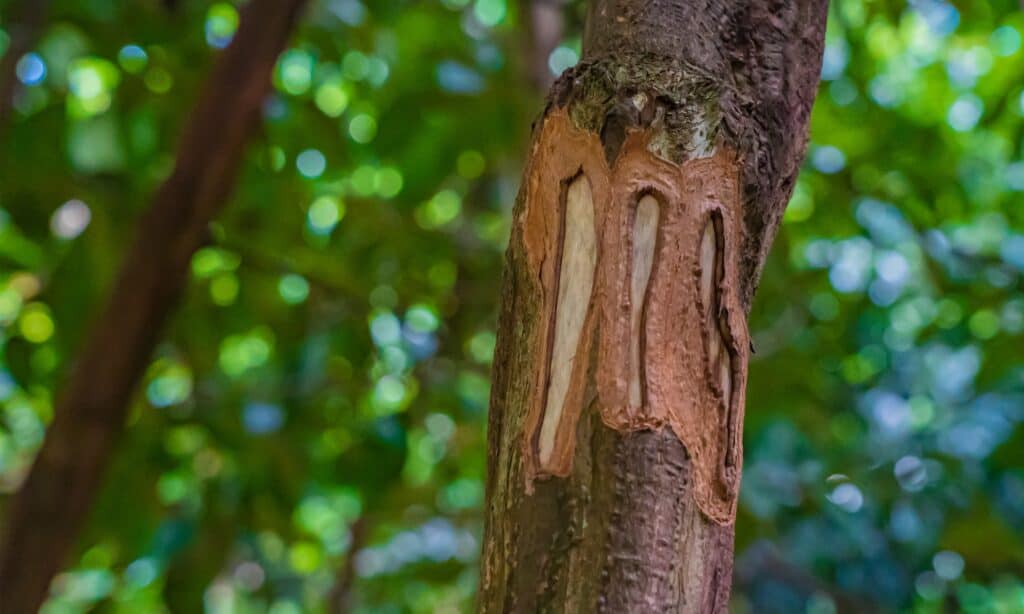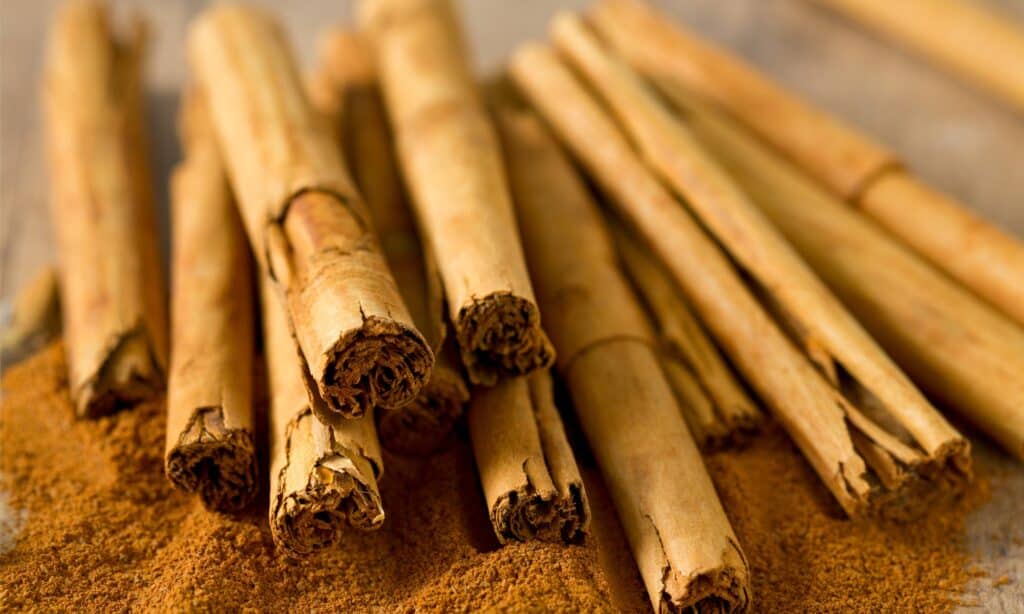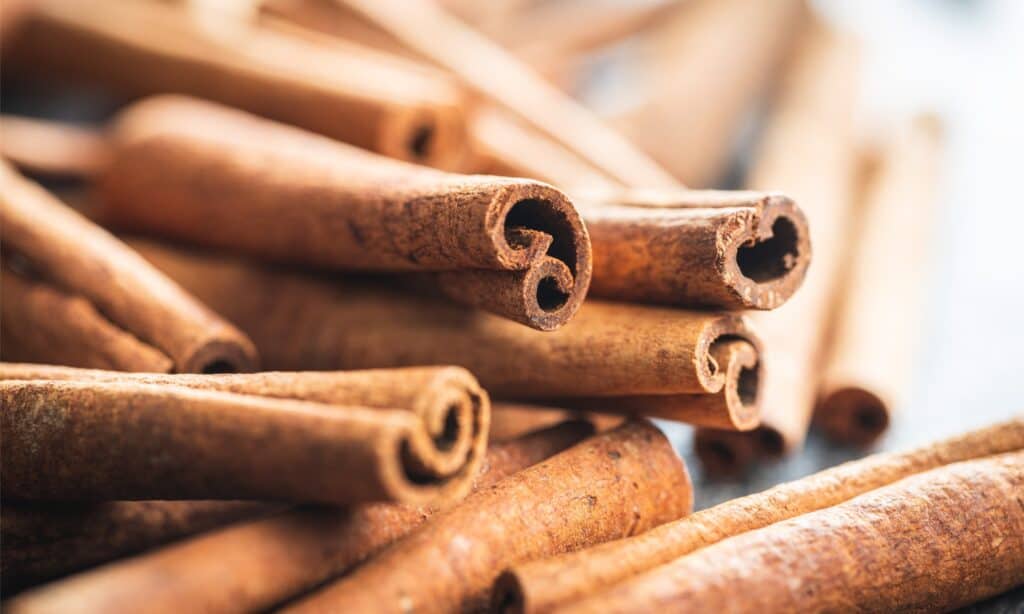Often confused with one another, what are all of the differences and similarities between Cassia vs Ceylon cinnamon? Which of these cinnamon varieties is the one most commonly consumed and produced, and which type works best depending on what recipe you are hoping to create? If you are interested in learning more about different types of cinnamon, you’re in the right place.
In this article, we will compare and contrast Cassia cinnamon with Ceylon cinnamon so that you can fully understand the differences between these two closely-related cinnamon varieties. We will go over what these plants look like as they grow, as well as how to grow them best. Plus, will let you know which of these two cinnamon varieties has the most potent taste and what they are best used for. Let’s get started now!
Comparing Cassia vs Ceylon Cinnamon

| Cassia Cinnamon | Ceylon Cinnamon | |
|---|---|---|
| Plant Classification | Cinnamomum cassia | Cinnamomum verum |
| Description | Trees can reach up to 50 feet in height, producing reddish-pink leaves when young that turn green as they age. Small edible buds bloom fragrant yellow flowers. The bark is thick and grayish brown, with edible cinnamon peeled from thick sections of bark. | Trees can reach up to 50 feet in height, producing young pinkish-orange leaves when young that turn green as they age. Small star flowers turn into purple fruits, and the entire plant smells vaguely of cinnamon. Bark is light brown with fresh green shining through in some spots, depending on age of tree. Edible cinnamon produced is found in many delicate layers of dried bark. |
| Uses | The most common cinnamon variety found in grocery stores. Prized for its classic cinnamon taste, powerful and flavorful | Common culinary cinnamon variety, but ceylon cinnamon is prized for its delicate flavor, thereby making it more expensive than cassia cinnamon overall |
| Origin and Growing Preferences | Native to China; prefers full sun and moist soil, as well as no frost conditions. Prefers zones 10-12 | Native to Sri Lanka; prefers full sun to partial shade, as well as plenty of humidity. Prefers hardiness zones 10-12 |
| Taste and Aroma | Strong and trademark cinnamon flavor, likely the one you are most familiar with. Some varieties are spicier than others | Delicate cinnamon flavor with floral accents or notes. More subtle compared to cassia cinnamon varieties, and sweeter overall, with a more mellow cinnamon taste |
Key Differences Between Cassia vs Ceylon Cinnamon

Ceylon cinnamon is also known as true cinnamon, while Cassia cinnamon is known as Chinese cinnamon.
©iStock.com/Natali22206
There are a number of key differences between Cassia cinnamon and Ceylon cinnamon. For example, Cassia cinnamon and Ceylon cinnamon are two distinct cinnamon species from one another. Cassia cinnamon bark is much thicker compared to the delicate layers found within Ceylon cinnamon bark. The overall flavor of Cassia cinnamon varieties is more potent compared to the delicate flavor found in Ceylon cinnamon varieties.
Let’s go over all of these differences in more detail now.
Cassia vs Ceylon Cinnamon: Classification
While it may surprise you, Cassia cinnamon and Ceylon cinnamon are related to an extent. However, they are indeed two distinct species from one another, with Ceylon cinnamon earning the title of a true cinnamon variety, while Cassia cinnamon is a Chinese cinnamon variety. You can classify Cassia cinnamon as Cinnamomum cassia and Ceylon cinnamon as Cinnamomum verum.
Cassia vs Ceylon Cinnamon: Description

Cassia cinnamon is the most popular cinnamon variety sold in grocery stores around the world, while Ceylon cinnamon is rarer and more prized.
©iStock.com/GarryKillian
The average Cassia cinnamon tree and Ceylon cinnamon tree are strikingly similar to one another, and you likely can’t tell the difference between these two plants upon first glance. They both reach up to 50 feet in height, with narrow leaves that change colors as the plant ages. However, the primary difference between Ceylon cinnamon trees and Cassia cinnamon trees is the overall thickness of the bark.
For example, looking at dried and prepared samples of Cassia cinnamon and Ceylon cinnamon side by side, you will notice that Ceylon cinnamon is composed of many delicate layers, while Cassia cinnamon is one solid piece. The bark of the Cassia cinnamon tree is thicker and harder compared to the easily manipulated bark of the Ceylon cinnamon tree.
Cassia vs Ceylon Cinnamon: Uses

Ceylon cinnamon originated in Sri Lanka, while Cassia cinnamon is native to China.
©iStock.com/Diana Taliun
While you can use Ceylon cinnamon and Cassia cinnamon interchangeably with one another, there are some differences in what they are used for. For example, Cassia cinnamon is the most popular cinnamon variety sold in grocery stores around the world, while Ceylon cinnamon is rarer and more prized. This means that Ceylon cinnamon is much more expensive than Cassia cinnamon overall.
Cassia vs Ceylon Cinnamon: Origin and How to Grow
Despite these trees looking strikingly similar to each other, Cassia cinnamon and Ceylon cinnamon originated in different locations. For example, Ceylon cinnamon originated in Sri Lanka, while Cassia cinnamon is native to China. However, both of these plants grow in a similar fashion, preferring full sunlight and plenty of humidity in order to thrive. They are hardy in zones 10 through 12, if you are interested in growing either Cassia cinnamon or Ceylon cinnamon outside.
Cassia vs Ceylon Cinnamon: Taste and Aroma

The taste of Ceylon cinnamon is more subtle and delicate compared to the powerful taste of Cassia cinnamon.
©iStock.com/jirkaejc
When it comes to their flavors, both of these specific cinnamon varieties have their own distinct uses in a culinary capacity, depending on what recipe you are hoping to create. However, the taste of Ceylon cinnamon is more subtle and delicate compared to the powerful taste of Cassia cinnamon. This is one of the reasons why Cassia cinnamon is widely distributed and produced, given that it has a more potent flavor compared to Ceylon cinnamon.
The photo featured at the top of this post is © iStock.com/jirkaejc
Sources
- Cinnamon and cassia, Available here: https://books.google.com/books?hl=en&lr=&id=bGJlVrdqVTsC&oi=fnd&pg=PA124&dq=cassia+cinnamon&ots=3jc_UH-AzO&sig=Z-gy6IjvdlEdoO7FuYZIxjbnSfA
Thank you for reading! Have some feedback for us? Contact the AZ Animals editorial team.






